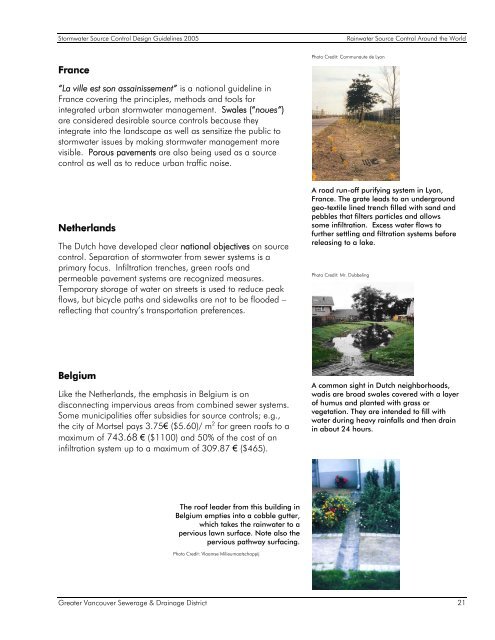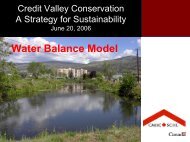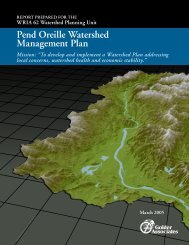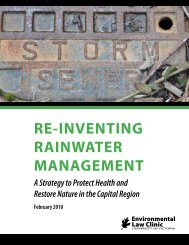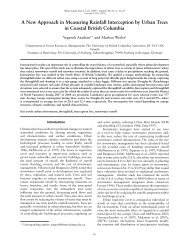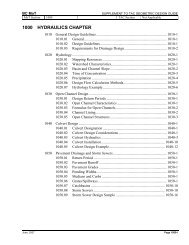Stormwater Source Control Design Guidelines 2005 - Waterbucket
Stormwater Source Control Design Guidelines 2005 - Waterbucket
Stormwater Source Control Design Guidelines 2005 - Waterbucket
Create successful ePaper yourself
Turn your PDF publications into a flip-book with our unique Google optimized e-Paper software.
<strong>Stormwater</strong> <strong>Source</strong> <strong>Control</strong> <strong>Design</strong> <strong>Guidelines</strong> <strong>2005</strong>Rainwater <strong>Source</strong> <strong>Control</strong> Around the WorldFrancePhoto Credit: Communaute de Lyon“La ville est son assainissement” is a national guideline inFrance covering the principles, methods and tools forintegrated urban stormwater management. Swales (“noues”)are considered desirable source controls because theyintegrate into the landscape as well as sensitize the public tostormwater issues by making stormwater management morevisible. Porous pavements are also being used as a sourcecontrol as well as to reduce urban traffic noise.NetherlandsThe Dutch have developed clear national objectives on sourcecontrol. Separation of stormwater from sewer systems is aprimary focus. Infiltration trenches, green roofs andpermeable pavement systems are recognized measures.Temporary storage of water on streets is used to reduce peakflows, but bicycle paths and sidewalks are not to be flooded –reflecting that country’s transportation preferences.A road run-off purifying system in Lyon,France. The grate leads to an undergroundgeo-textile lined trench filled with sand andpebbles that filters particles and allowssome infiltration. Excess water flows tofurther settling and filtration systems beforereleasing to a lake.Photo Credit: Mr. DubbelingBelgiumLike the Netherlands, the emphasis in Belgium is ondisconnecting impervious areas from combined sewer systems.Some municipalities offer subsidies for source controls; e.g.,the city of Mortsel pays 3.75€ ($5.60)/ m 2 for green roofs to amaximum of 743.68 € ($1100) and 50% of the cost of aninfiltration system up to a maximum of 309.87 € ($465).A common sight in Dutch neighborhoods,wadis are broad swales covered with a layerof humus and planted with grass orvegetation. They are intended to fill withwater during heavy rainfalls and then drainin about 24 hours.The roof leader from this building inBelgium empties into a cobble gutter,which takes the rainwater to apervious lawn surface. Note also thepervious pathway surfacing.Photo Credit: Vlaamse MilieumaatschappijGreater Vancouver Sewerage & Drainage District21


